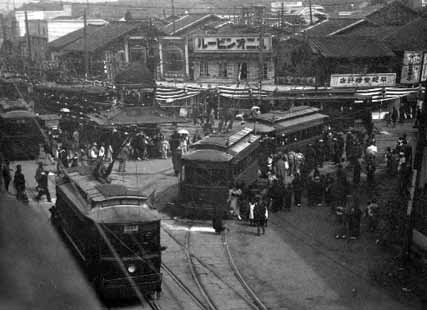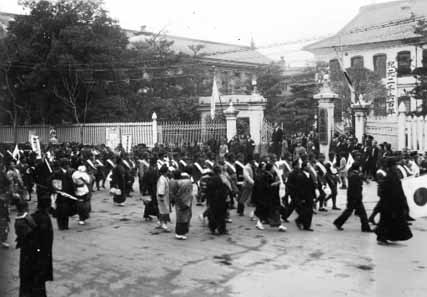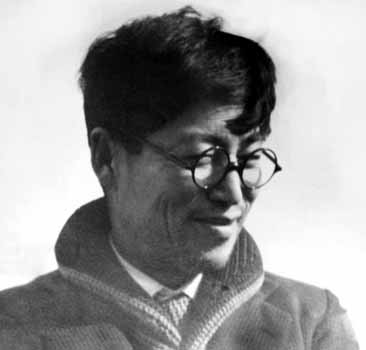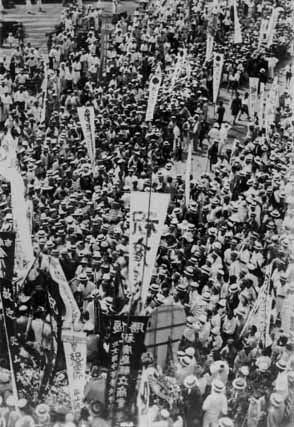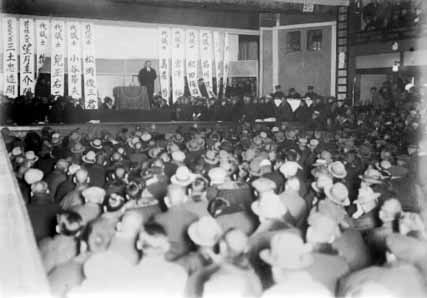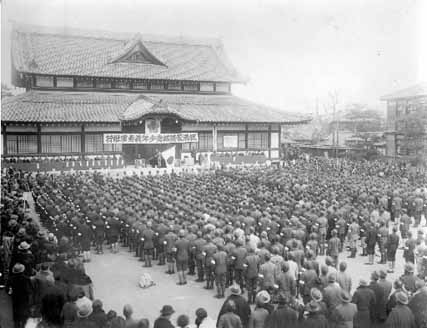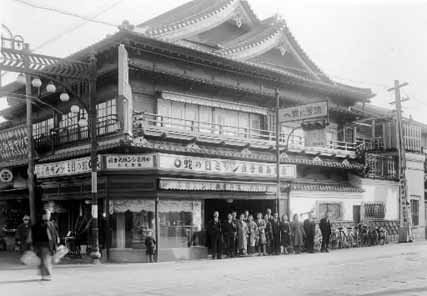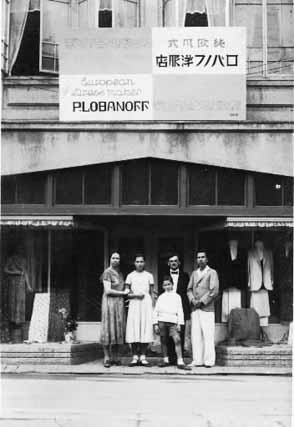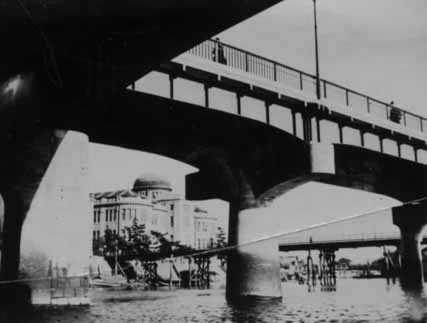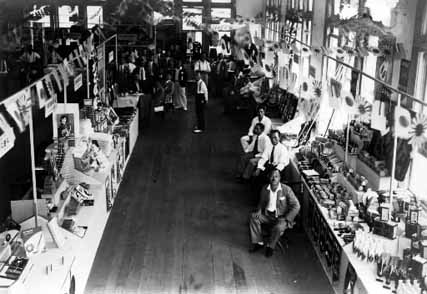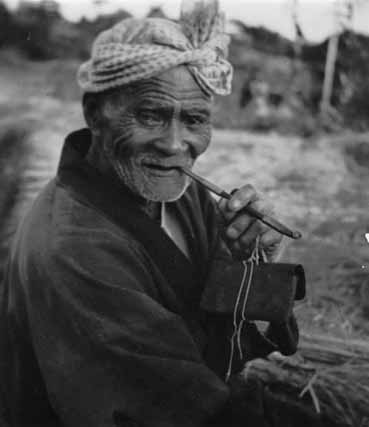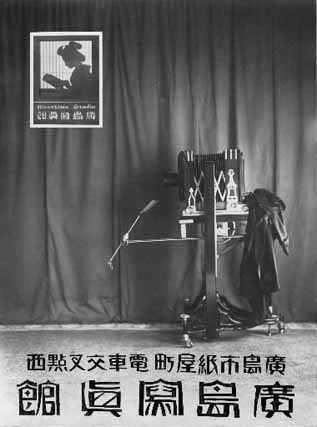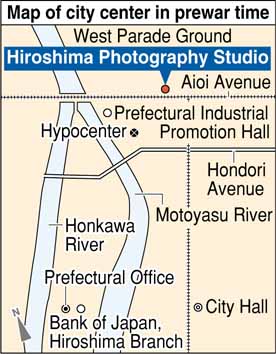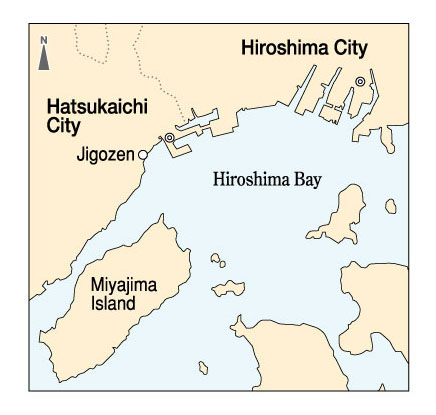- A-bomb Images
- Photos vividly depict Hiroshima before the atomic bombing
Photos vividly depict Hiroshima before the atomic bombing
by Masami Nishimoto and Junpei Fujimura, Staff Writers
A treasure trove of 2,000 photographs depicting Hiroshima before the atomic bombing has been donated to the municipal archives, and an exhibition is slated for sometime this year. The recently discovered photographs were taken by Wakaji Matsumoto, who ran a photography studio in the city center and died in 1965 at the age of 76. The photographs, which had been stored at his parents’ home in Hatsukaichi City, vividly capture life in Hiroshima before the atomic bombing and include 180-degree panorama shots. A representative of the municipal archives described the photos as “first-rate.”
The photos were taken over a period spanning nearly two decades from 1927 through March 1945, just a few months before the atomic bomb was dropped on the city. Among them are several rare photos recording historic events that took place in Hiroshima in the first half of the 20th Century. One shows cheering citizens welcoming home the baseball team from Hiroshima Commercial High School after its victory at the national tournament in the summer of 1929. Another taken in 1936 depicts the first trade fair held at the Hiroshima Prefectural Industrial Promotion Hall, now the Atomic Bomb Dome. Yet another photo shows a ceremony held to send off members of the Manchuria-Mongolia Youth Volunteer Corps in 1942.
Mr. Matsumoto, a native of Hatsukaichi, a city adjacent to Hiroshima, immigrated to Los Angeles in 1906. While making his living as a farmer, he mastered the latest photographic techniques, and in 1927 he returned to Japan with his family. He opened the Hiroshima Photography Studio in the city’s downtown Naka Ward, and with the permission of the Hiroshima Army Transport Division and other authorities he continued to take photographs in the city during its growing militarization. He also took photographs for various newspapers.
Mr. Matsumoto closed his studio in 1942 after Japan went to war with the U.S. and took his prints to his parents’ home in Hatsukaichi, thus saving them from destruction in the atomic bombing. Mr. Matsumoto’s grandson, Hitoshi Ouchi, 51, who lives in Hiroshima, said he confirmed the existence of a large quantity of photos last year, and after going through some of them informed the City of Hiroshima and others about his find.
Kazuhiko Takano, director of the municipal archives, said, “We only have about 200 photos of Hiroshima before the atomic bombing, including copies donated by private individuals. Both the quality and quantity of Mr. Matsumoto’s photographs are exceptional. I look forward to holding an exhibition so the public can see them.”
Panoramic photos taken by Wakaji Matsumoto in October 1927 of a sports festival at Jigozen Elementary School in Hatsukaichi and a funeral procession in front of the former prefectural office in Naka Ward were shown to Keiji Mitsui, curator at the Tokyo Metropolitan Museum of Photography.
“Despite the distance between the foreground and the background, the resolution of the photos is very high. The photographer clearly had good knowledge of photographic techniques and was experienced in using cameras,” Mr. Mitsui said. “Panoramic photos of this high quality from the early Showa Period [1926-1989] are very rare.” Mr. Matsumoto is believed to have used a swing-lens panoramic camera in which the lens pivots around a fixed point while the film is exposed.

[caption] Sports festival at Jigozen Elementary School in Hatsukaichi. This photo was taken on October 5, 1927, shortly after Mr. Matsumoto returned from the U.S. Like the lyrics to the school’s song, which say, “Let us open a window onto the world,” starting in the late 19th Century many residents of Jigozen immigrated to Hawaii and the U.S mainland. The two-story wooden school building was built in 1923 with donations from residents living in the U.S. and other places overseas. (The original print measures 116 cm by 25 cm.)

[caption] The city as seen from the former prefectural office. In the center behind the members of the funeral procession is the Hiroshima branch of the Bank of Japan, which was located across from the prefectural office in Naka Ward. In this area there were also residences of military officers, government officials, and the owners of major local stores. The Bank of Japan branch relocated to another location in Naka Ward in 1936. (The original print measures 93 cm by 25 cm.)
According to The History of Japanese Photography by Kotaro Iizawa, the first commercial photography studio in Japan opened in Tokyo in 1926. Why was Mr. Matsumoto, who worked in an outlying area, able to take not only panoramic photos, which required advanced technology, but also photos that incorporated the geometrical composition and style of close-ups that were popular in the West? The answer is tied to the history of Hiroshima.
Prior to World War II more people emigrated from Hiroshima than from any other prefecture in Japan. In fact, Mr. Matsumoto’s birthplace in Jigozen, a part of Hatsukaichi, was known as “Amerikamura” (“America Village”). In 1906, Mr. Matsumoto moved to the U.S. where his father had immigrated. In a register of Japanese living in the U.S. published in 1922, Wakaji is listed as a farmer living in Los Angeles and the owner of an automobile.
Mr. Matsumoto’s second daughter, Shizue Kawamoto, 83, a resident of Hatsukaichi, said, “I was told he learned about photography in the U.S.” His panoramic photos include shots of immigrant families working in the fields. In 1927 he returned to Japan with his wife and seven children, including the 2-year-old Shizue. He brought with him a high-priced camera, a model that was almost impossible to buy in Japan at the time and which he had purchased with his earnings.
In Japan, Mr. Matsumoto evidently earned a reputation for the photographic skills he had acquired in the U.S. He is listed as a photographer in the 1932 edition of Hiroshima’s business directory. His studio was located where the Sogo department store now stands. Like today, the area was then a bustling business district, and Mr. Matsumoto’s two-story studio was busy. “Dad was always running here and there taking pictures,” Shizue said. “My brothers, who later returned to the U.S. after they got out of school, helped him develop and print the photos.”
While Hiroshima grew as both a business and a military town, Mr. Matsumoto captured a variety of scenes on film, including events at the landmark Prefectural Industrial Promotion Hall (now the Atomic Bomb Dome) and the army’s west parade ground (now the site of Hiroshima Municipal Stadium). He also photographed the citizens who turned out in droves to welcome the Hiroshima Commercial High School baseball team upon their triumphant return after capturing the title in the national tournament as well as a send-off for members of the Manchuria-Mongolia Youth Volunteer Corps, a venture that ended in tragedy.
But according to The History of Japanese Photography, after war broke out between Japan and the U.S. in 1941, photography was forbidden in Hiroshima in order to maintain military secrecy. As a result, Mr. Matsumoto’s studio went out of business. According to his daughter, in the spring of 1942, he loaded his photographic equipment and other supplies on a horse cart and brought them to his parents’ house in Jigozen. Thus his photographs were saved from destruction.
The atomic bomb destroyed the photos in the collections of the Chugoku Shimbun and the Hiroshima branches of other newspaper companies as well as those belonging to the approximately 40 photography studios, government offices and private individuals in the area. A search by the city’s archives for pictures depicting Hiroshima before the atomic bombing yielded fewer than 200 photographs, including those submitted by private citizens. That is one reason the staff of the archives regards Mr. Matsumoto’s recently discovered photos as “first-rate” and is eager to catalogue them and make them available to the public.
Mr. Matsumoto’s photos will bring new life to those who lived in Hiroshima before the atomic bombing.
(Originally published on January 3, 2009)
A treasure trove of 2,000 photographs depicting Hiroshima before the atomic bombing has been donated to the municipal archives, and an exhibition is slated for sometime this year. The recently discovered photographs were taken by Wakaji Matsumoto, who ran a photography studio in the city center and died in 1965 at the age of 76. The photographs, which had been stored at his parents’ home in Hatsukaichi City, vividly capture life in Hiroshima before the atomic bombing and include 180-degree panorama shots. A representative of the municipal archives described the photos as “first-rate.”
The photos were taken over a period spanning nearly two decades from 1927 through March 1945, just a few months before the atomic bomb was dropped on the city. Among them are several rare photos recording historic events that took place in Hiroshima in the first half of the 20th Century. One shows cheering citizens welcoming home the baseball team from Hiroshima Commercial High School after its victory at the national tournament in the summer of 1929. Another taken in 1936 depicts the first trade fair held at the Hiroshima Prefectural Industrial Promotion Hall, now the Atomic Bomb Dome. Yet another photo shows a ceremony held to send off members of the Manchuria-Mongolia Youth Volunteer Corps in 1942.
Mr. Matsumoto, a native of Hatsukaichi, a city adjacent to Hiroshima, immigrated to Los Angeles in 1906. While making his living as a farmer, he mastered the latest photographic techniques, and in 1927 he returned to Japan with his family. He opened the Hiroshima Photography Studio in the city’s downtown Naka Ward, and with the permission of the Hiroshima Army Transport Division and other authorities he continued to take photographs in the city during its growing militarization. He also took photographs for various newspapers.
Mr. Matsumoto closed his studio in 1942 after Japan went to war with the U.S. and took his prints to his parents’ home in Hatsukaichi, thus saving them from destruction in the atomic bombing. Mr. Matsumoto’s grandson, Hitoshi Ouchi, 51, who lives in Hiroshima, said he confirmed the existence of a large quantity of photos last year, and after going through some of them informed the City of Hiroshima and others about his find.
Kazuhiko Takano, director of the municipal archives, said, “We only have about 200 photos of Hiroshima before the atomic bombing, including copies donated by private individuals. Both the quality and quantity of Mr. Matsumoto’s photographs are exceptional. I look forward to holding an exhibition so the public can see them.”
“First-rate” photos are products of photography training in the U.S.
Panoramic photos taken by Wakaji Matsumoto in October 1927 of a sports festival at Jigozen Elementary School in Hatsukaichi and a funeral procession in front of the former prefectural office in Naka Ward were shown to Keiji Mitsui, curator at the Tokyo Metropolitan Museum of Photography.
“Despite the distance between the foreground and the background, the resolution of the photos is very high. The photographer clearly had good knowledge of photographic techniques and was experienced in using cameras,” Mr. Mitsui said. “Panoramic photos of this high quality from the early Showa Period [1926-1989] are very rare.” Mr. Matsumoto is believed to have used a swing-lens panoramic camera in which the lens pivots around a fixed point while the film is exposed.

[caption] Sports festival at Jigozen Elementary School in Hatsukaichi. This photo was taken on October 5, 1927, shortly after Mr. Matsumoto returned from the U.S. Like the lyrics to the school’s song, which say, “Let us open a window onto the world,” starting in the late 19th Century many residents of Jigozen immigrated to Hawaii and the U.S mainland. The two-story wooden school building was built in 1923 with donations from residents living in the U.S. and other places overseas. (The original print measures 116 cm by 25 cm.)

[caption] The city as seen from the former prefectural office. In the center behind the members of the funeral procession is the Hiroshima branch of the Bank of Japan, which was located across from the prefectural office in Naka Ward. In this area there were also residences of military officers, government officials, and the owners of major local stores. The Bank of Japan branch relocated to another location in Naka Ward in 1936. (The original print measures 93 cm by 25 cm.)
According to The History of Japanese Photography by Kotaro Iizawa, the first commercial photography studio in Japan opened in Tokyo in 1926. Why was Mr. Matsumoto, who worked in an outlying area, able to take not only panoramic photos, which required advanced technology, but also photos that incorporated the geometrical composition and style of close-ups that were popular in the West? The answer is tied to the history of Hiroshima.
Prior to World War II more people emigrated from Hiroshima than from any other prefecture in Japan. In fact, Mr. Matsumoto’s birthplace in Jigozen, a part of Hatsukaichi, was known as “Amerikamura” (“America Village”). In 1906, Mr. Matsumoto moved to the U.S. where his father had immigrated. In a register of Japanese living in the U.S. published in 1922, Wakaji is listed as a farmer living in Los Angeles and the owner of an automobile.
Mr. Matsumoto’s second daughter, Shizue Kawamoto, 83, a resident of Hatsukaichi, said, “I was told he learned about photography in the U.S.” His panoramic photos include shots of immigrant families working in the fields. In 1927 he returned to Japan with his wife and seven children, including the 2-year-old Shizue. He brought with him a high-priced camera, a model that was almost impossible to buy in Japan at the time and which he had purchased with his earnings.
In Japan, Mr. Matsumoto evidently earned a reputation for the photographic skills he had acquired in the U.S. He is listed as a photographer in the 1932 edition of Hiroshima’s business directory. His studio was located where the Sogo department store now stands. Like today, the area was then a bustling business district, and Mr. Matsumoto’s two-story studio was busy. “Dad was always running here and there taking pictures,” Shizue said. “My brothers, who later returned to the U.S. after they got out of school, helped him develop and print the photos.”
While Hiroshima grew as both a business and a military town, Mr. Matsumoto captured a variety of scenes on film, including events at the landmark Prefectural Industrial Promotion Hall (now the Atomic Bomb Dome) and the army’s west parade ground (now the site of Hiroshima Municipal Stadium). He also photographed the citizens who turned out in droves to welcome the Hiroshima Commercial High School baseball team upon their triumphant return after capturing the title in the national tournament as well as a send-off for members of the Manchuria-Mongolia Youth Volunteer Corps, a venture that ended in tragedy.
But according to The History of Japanese Photography, after war broke out between Japan and the U.S. in 1941, photography was forbidden in Hiroshima in order to maintain military secrecy. As a result, Mr. Matsumoto’s studio went out of business. According to his daughter, in the spring of 1942, he loaded his photographic equipment and other supplies on a horse cart and brought them to his parents’ house in Jigozen. Thus his photographs were saved from destruction.
The atomic bomb destroyed the photos in the collections of the Chugoku Shimbun and the Hiroshima branches of other newspaper companies as well as those belonging to the approximately 40 photography studios, government offices and private individuals in the area. A search by the city’s archives for pictures depicting Hiroshima before the atomic bombing yielded fewer than 200 photographs, including those submitted by private citizens. That is one reason the staff of the archives regards Mr. Matsumoto’s recently discovered photos as “first-rate” and is eager to catalogue them and make them available to the public.
Mr. Matsumoto’s photos will bring new life to those who lived in Hiroshima before the atomic bombing.
(Originally published on January 3, 2009)
Click on the photos below to enlarge the images and read the captions in a larger font.

